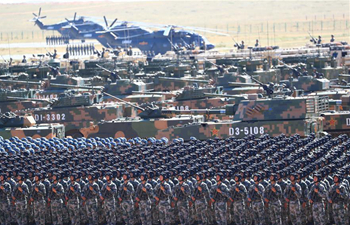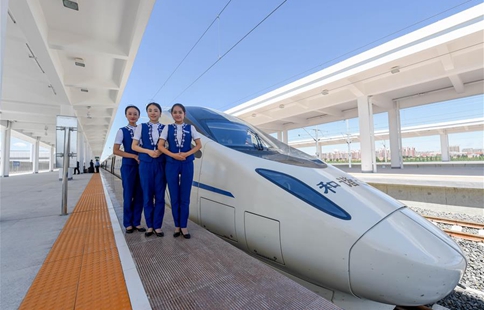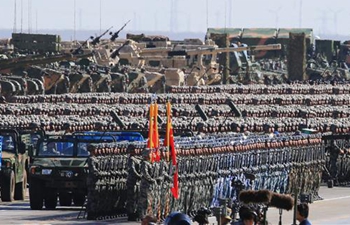CAIRO, Aug. 6 (Xinhua) -- Egypt's Suez Canal has maintained its classification as the most important and fastest maritime shipping corridor despite the economic challenges faced by the world in 2015 and 2016, the head of the Egyptian Suez Canal Authority Mohab Mamish said on Sunday.
The revenues of the Suez Canal amounted to 2.94 billion U.S. dollars, equivalent to 52.5 billion Egyptian pounds, during the first seven months of 2017, Mamish said in a press statement.
The Egyptian official added that the canal's revenues represented an increase of 19 million dollars year on year.
He pointed out that the number of vessels crossing the Suez Canal during the period mentioned amounted to 9,949 ships, an increase of 2.1 percent year on year.
Mamish said the tonnage recorded during the first seven months of this year amounted to 585.6 million tons, an increase of 4.3 percent year on year.
In August of 2015, Egypt opened a new 35-kilometer waterway alongside the original 190 km Suez Canal, plus a 37-kilometer expansion and deepening of some parts of the existing one.
The new artificial waterway, which is part of a larger project to expand Suez port, ship facilities and build large industrial zones, is designed to raise Egypt's international profile, and build the nation as a major trade hub.
It has been an essential source for hard currency along with tourism, which has been withering since 2011 uprising that toppled President Hosni Mubarak.
In another statement issued Sunday to mark the second anniversary of the opening of the new Suez Canal, Mamish said that the continuous development in the field of maritime transport and international trade movement during the past years, especially with the emergence of the current generation of giant container vessels, was the reason for digging the new 72-kilometer double canal.
The move increased the number of ships that can cross the Suez Canal to 97 ships a day, Mamish added.
All container trade between Asia and Europe crossed through the Suez Canal, Mamish said, adding that the canal's share of container ships between the U.S. East Coast and Southeast Asia increased to 52 percent in 2016, compared with only 25 percent in 2006.
He said 2017 witnessed the beginning of the recovery of the international trade traffic passing through the Suez Canal.
"The revenues of the canal in the period from March to July 2017 amounted to 2.17 billion U.S. dollars, representing an increase by 3 percent," Mamish said.
The number of vessels crossing the canal during that period reached 7,294 ships compared to 7,021 ships during the same period last year, the official added.
The new Suez Canal has reduced the transit time of vessels coming from the north by seven hours, Mamish said.
"The average cost per container ship is about 14,000 U.S. dollars, which means that the new channel has provided about 240 million U.S. dollars to transiting ships over the past two years," he added.
The Suez Canal is an artificial sea-level waterway in Egypt, connecting the Mediterranean Sea and the Red Sea. It was opened for navigation in November 1869 after 10 years of construction.
The canal is one of the most important waterways in the world since it allows ships to travel between Europe and South Asia without navigating around Africa, thereby reducing the sea voyage distance between Europe and India by about 7,000 km.

















